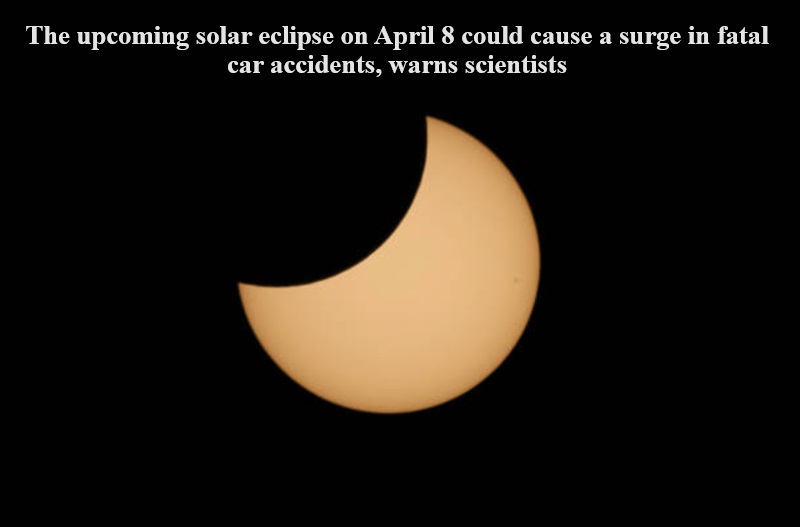
A forthcoming solar eclipse slated for April 8 could potentially trigger a surge in fatal car accidents, according to scientists’ findings outlined in a recent report. Similar circumstances unfolded during the last total solar eclipse in North America in 2017, during which a cluster of car crashes occurred within a single hour coinciding with the eclipse.
Dr. Donald Redelmeir, a co-author of the study and a professor of medicine at the University of Toronto, clarified that the car accidents are not directly caused by the temporary darkness resulting from the eclipse. Instead, concerns primarily revolve around the surrounding hours, particularly as individuals commute to their chosen observation sites and, especially, afterward as they journey home.
During the 2017 eclipse, the path of totality—where the moon’s shadow traverses the Earth—was relatively narrow, spanning approximately 70 miles (113 kilometers) in width. Within this path, observers experienced the longest duration of totality, when the moon entirely obscures the sun’s face.
Approximately 20 million people in the U.S. traveled to various cities along the path of totality to witness this celestial spectacle.
During the upcoming April 8 eclipse, individuals positioned within the path of totality can expect totality to last approximately 2.5 to 4.5 minutes, depending on their specific location. However, those situated outside the path boundaries will only witness a partial eclipse.
Analyzing traffic data from the National Highway Traffic Safety Administration during the 2017 eclipse, Dr. Redelmeier and Dr. John Staples, the study’s co-author, observed a 31% overall increase in car crashes during the three-day period surrounding the August 2017 eclipse. They employed a U.S. Navy calculator to determine the timing of each crash relative to the time of maximum eclipse, based on the accident site’s geographic coordinates.
The risk of fatal crashes exhibited fluctuations over time, peaking above average before the eclipse, declining during the eclipse, and then escalating to nearly 50% above average levels after the event. Notably, areas with clear skies experienced higher risk spikes compared to overcast locations.
In preparation for the April 8 eclipse, Dr. Redelmeier emphasized the importance of adhering to standard safety precautions, including observing speed limits, minimizing distractions while driving, signaling turns and lane changes, and wearing seat belts.

Post Your Comments